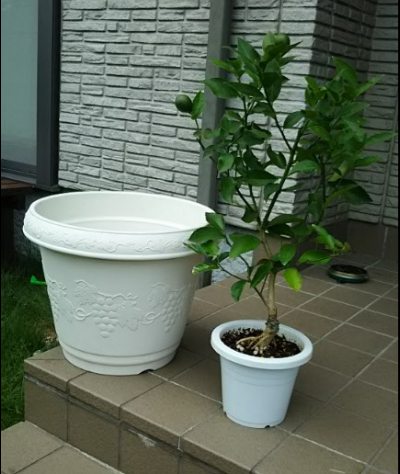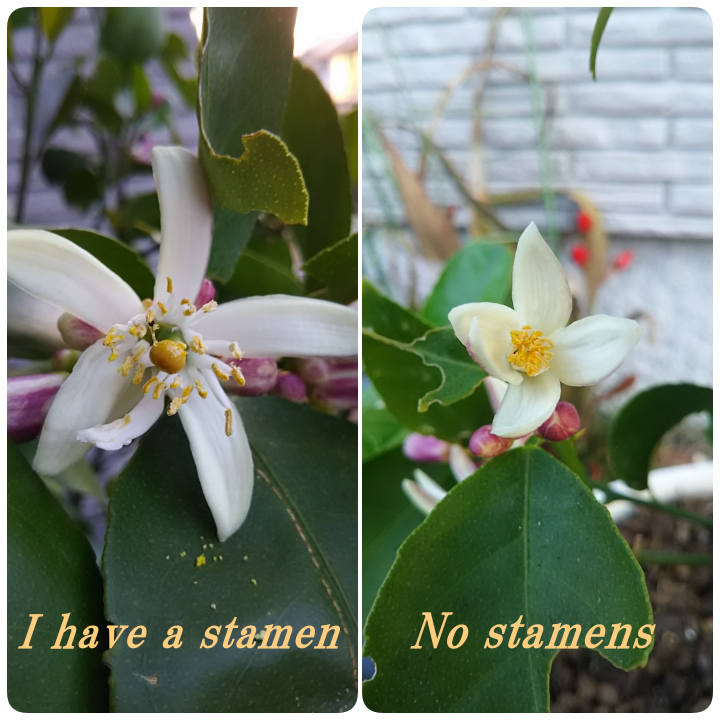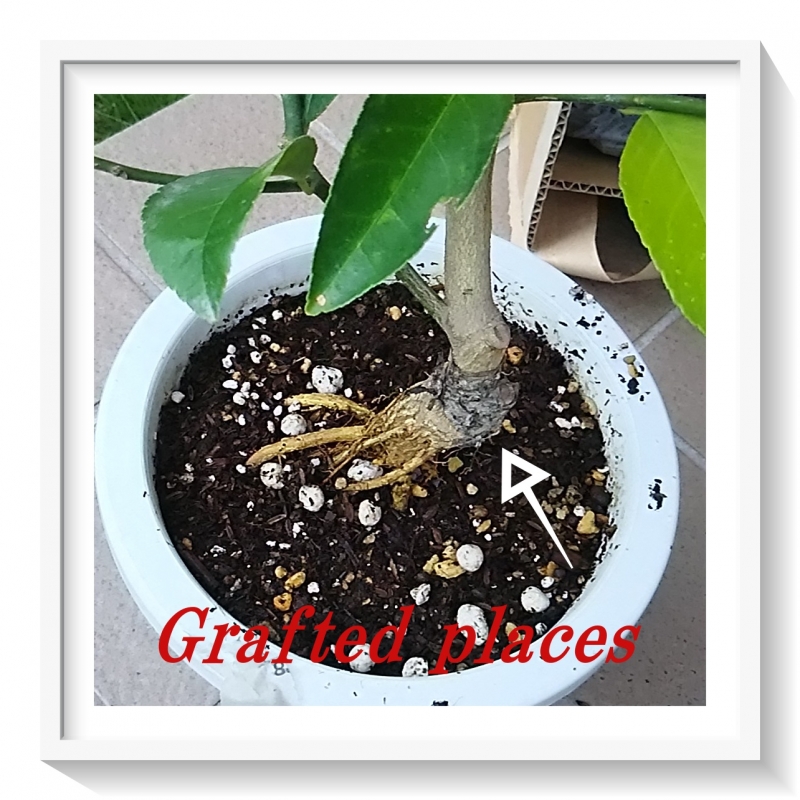⑦ How to plant a lemon in pots
👉 Proper time for plantation
Proper time to plant the young plant of
the lemon is from the end of February to
the end of March as same as a garden
plant.
In the case of a potted plant, we can
carry a bowl to the room without
influence of the cold at cold winter
time.
Therefore you may plant it from September
to October.
👉 A large seedling is suitable
for a potted plant
A large seedling is suitable for a potted
plant. This is because the large seedling
can be grown as the bowl which it
purchased, and the first fruition is
earlier than a stick seedling.
When we choose the large seedling, we
should choose a young plant which is
branching off equally from the plant
foot treatment.
Because the space where fruits grow
increases and can finish it compactly.
👉 Various bowls
We are divided into a plastic bowl, an
unglazed bowl, an earthenware bowl by
the difference in materials. There is the
light, strong resin bowl. You should
better to buy a light plastic bowl and
resin bowl, because you may carry it to
the room at the winter cold time.
As a matter of course, the weight of the
young plant and soil will be added to
weight of bowl itself.
An oblong bowl has a sense of stability
than a tall bowl. If there is a bowl that
the diameter of the bowl top is same as
a bowl bottom, it has a sense of
stability more.
The design is important, too. But,we will
image height and width of the future
young plant. I recommend that you choose
the bowl which "is hard to fall down".
👉 Soil to use
A weed is easy to grow when we use the
garden soil, and also, the drainage is
not so good, too. The "soil for fruit
tree" seems to be good if available.
The acidity of this soil is ph5 .5-6.0,
and you can just use it.
When it is not available, you mix
"the soil for vegetables" and Kanuma
soil in the ratio of 7:3 and seem to
use it.
👉 Plantation methods
As for the plantation method, please see
the next article "transplanted a potted
lemon". In addition, even in the case of
a potted plant, we can suppress the
growth of the tree. For example,
we pull a branch aside. we suppress the
growth by doing this way and can make
with fruit better. At first we roll the
edge of the bowl with a string.
Then, we tie the string which I wrapped
the edge in the branch which I want to
pull aside with a string.
⑧ How to transplant a lemon
<
strong>into a bowl
In the case of a potted plant, the inside
of the bowl becomes full of roots when we
just leave it. So, it is usually
necessary to transplant it at the pace
once in 2-3 years. The old root comes to
wither up to become hard to suck water
well even if we do watering.
① A root comes out of the bottom
of the bowl
② Water did not readily soak into soil
even if we did water
While being careful about such states, we
transplant it into a slightly big bowl. (
1~2号 larger ) By the way, we can
measure the size (号) of the bowl when
we divide a diameter by 3㎝. (30cm in
diameter /3cm = 10号) Even if you do not
want to make a bowl big, please
transplant it, and please cut down a
jam-packed root.
When we transplant it, we warn next.
A root may rot when we transplant a
seedling into a bigger bowl suddenly
because soil does not readily dry. T
herefore you seem to be careful about
the size of the bowl to exchange.(into a
slightly big bowl)
By the way, I did not know the above.
Therefore I have exchanged it with a 14号
bowl from a 7号 bowl when I
transplanted the potted lemon which I
purchased. At hot time of July, I did a
good watering every day twice in morning,
an evening. I do not seem to do the
decayed root for the moment. I want to
be careful about decayed root in future.

Article of the transplantation
that I tried
「I transplanted a potted lemon plant!!」
Please take a look. ( but Japanese )
⑨ Care for flower and bud
(I work on pollination)
👉 About pollination
As the young plant of the lemon is
pollinated with one and bears fruit,
the pollination tree is not necessary.
In addition, we do not need the
artificial pollination basically because
the insects carry the pollen. My lemon
does nothing in particular, but it is
pollinated and bear fruit.
(There is not particularly a lot an
insect)
But it seems to become hard to be
pollinated when insects do not come very
much. When a fruit does not grow
though the flower of the lemon blooms,
please do artificial pollination. A fruit
seems to have possibilities to grow.
The artificial pollination is possible by
using dry writing brushes when we touch
it in turn in a stamen and the pistil
capitals.
👉 Care for flower and bud
We pick all the flower (bud) which
bloomed in autumn and summer to promote
that we grow fruit.
(When we grow the fruit which grow from
the flower which bloomed in spring)
*About the flower(bud) which bloomed
in spring
When do you pick a bud and a flower?
A judgment seems to change by a purpose.
a.A leaf is necessary to grow fruit.
e="font-size:16px;"> (20 pieces of leaves are necessary
for one fruit?)
b.If we pick the bud and flowers,we can
spend the nourishment for branches
and leaves and flowers and buds
which we left.
⇒We should pick flowers and buds.
c.In consideration of a physical fruit
drop, we do not pick flowers and
buds.
⇒We should not pick flowers and buds.
Physiological fruit drop (June drop)
We seem to be able to consider that a
physiological fruit drop is a self-regulating
function of fruit tree itself. A physiological
fruit drop is a menstruation phenomenon
that it try to leave a few fruits which
is only grow and drop other fruit when
nutrition is insufficient.
A menstruation phenomenon. When there are too few fruits drop, a tree body weakens and causes a biennial bearing. (A high yielding year and low yielding year came one after the other.) On the contrary, when there are too many fruits drop, growth becomes popular, and the branch will be a abnormally long branch. The physiological fruit drop is classified roughly into two ways. One is an fruit drop appearing soon after the flowering. It is a latter term fruit drop appearing before a crop one more.
We can concentrate on giving nourishment to a bud and flower and the branches and leaves which we want to leave when we pick up an unnecessary bud and flower. However, when a fruit has begun to become really, physiological fruit drop happens, and a fruit hardly remains if "a fruit to bring up" falls. Therefore we do not cut a bud and the flower and leave all. A way of thinking to perform fruit picking after a physiological fruit drop is like C.
This year my garden planted lemon has added about 100 flowers. It was a bud for a long time, but the flowers finally bloomed. However, when I thought that the flowers bloomed on May 10, the flowers began to fall on May 13. If you would like to organize to a certain extent in advance, I think that it would be better to do a bud picking rather than a flower picking.
In lemon flowers, incomplete flowers without stamen may bloom. (Of course, it does not become a fruit.) It is said that low temperature is the cause. Also, if the tree is still young and there is no power to fruit it seems there will be many incomplete flowers. Lisbon lemon raised in our house seems to be a species with many incomplete flowers. Meyer lemon is a kind that fruits are often attached, and it seems that there are not too many incomplete flowers. If incomplete flowers bloom, it would be better if you picked flowers. (After scattering naturally, remove residual flowers.)

The record at that time is here!
👉 I tried picking fruits of lemon of potted plants.
The state at that time is "here"!
⑩ Cutting of the lemon
It cuts out the branches, stems, leaves etc of the plant, inserts it in the soil and puts out the roots. Fresh branches at the tip of the branch and flexible branches under extension seems to be unusable for cutting because it tends to rot after insertion. Branches that have stopped growing and become a little harder seem to be suitable for cutting of lemons.
As a suitable period, it is said that the period of the rainy season in June is good. Cuttings are said to be less prone to fruit, less vulnerable to diseases and pests, shorter life span than grafts. However, it does not need to prepare a rootstock, and the point that it is relatively easy to increase seedlings is attractive.
It is said that citrus fruits are relatively easy to cut. When I cut it, for example, I used a "root promoter", but it is said that roots grow only by adding nothing at all "just put the cut branches in soil".
① cutting branches that have stopped growing and become a little harder, ② growing in a shade not exposed to rain, ③ watering every morning and evening, etc. are the points in cutting. However, I think that "roots will grow on cuttings just by watering firmly everyday."
On June 17, I cut seven branches. I raised it in the shade that does not hit the rain.(One of them raised in the place where sun and rain hit) A new sprout came out from one branch after 42 days. After that, sprouts came out from all the branches.
<Cutting procedure I did>
a.Cut the solid branches into a length of 10 to 15 cm.
And drop the leaves on the lower half of the branches.
Next, cut the remaining leaves in half.
(To suppress transpiration)
b.Soak this branch in a bucket filled with water.
(About 1 hour)
c.Cut the lowe
r tip of the branch off the water diagonally.
(To increase the cross sectional area and increase the water supply volume,
and to expand the area where the roots come out.)
d.Apply a rooting promoter to the lower tip of the cut branch.
e.Put the soil exclusively for sowing buds and seeds, and insert the cuttings.
When inserting, digging the hole, cover the branch with soil
so that rooting promoter can not be removed.
f.Add water to the whole.
Here is the situation when I went cutting.(With photos)
Since the roots came out from the cuttings, the state at the time of replanting into a pot is here.
「Cutting of lemon 54 days later ...」
In the future, seedlings made of cuttings,
① Is it difficult to become fruitful? ,
② Is it vulnerable to diseases and pests? ,
③ Is the lifetime short? ,
I would like to validate.
⑪ Grafting of lemon
Looking at the lemon seedlings that are on sale, most of them seem to be seedlings made from grafting. Grafting is done because cold resistance and disease resistance will be higher than without grafting. That is because you use a growing stock.
Depending on the type of fruit trees and flowers, there are things that can not be seeded, or it takes a long time to be able to grow, when raised from their own seeds or when raised with cuttings. When growing with grafting, it will be fruit soon, it seems that you can make a strong tree against diseases and pests.
"Karatachi" often used as a rootstock of lemon
It is a characteristic that there is a big thorns, and fruits is a cold-resistant variety among the citrus. It is also known as the bait of swallowtail butterfly. It can be used as a rootstock of all citrus fruits. Karatachi is used as a rootstock in 95% of domestic citrus fruits.
When raising "Karatachi" as a rootstock from seeds, it seems necessary for about two years. In addition, when purchasing seedlings of Karatachi, a sending fee (around 1,000 yen) will be required for 1 seedling (around 600 yen) . If so, rather than trying grafting, it will be cheaper to purchase lemon seedlings.

👉 「Grafting of lemon. I will try a multi-kind joint with one lemon tree!」
is「Here」!
👉 「I tried grafting on a lemon tree. Challenge for many kinds of joints!」
is「Here」!